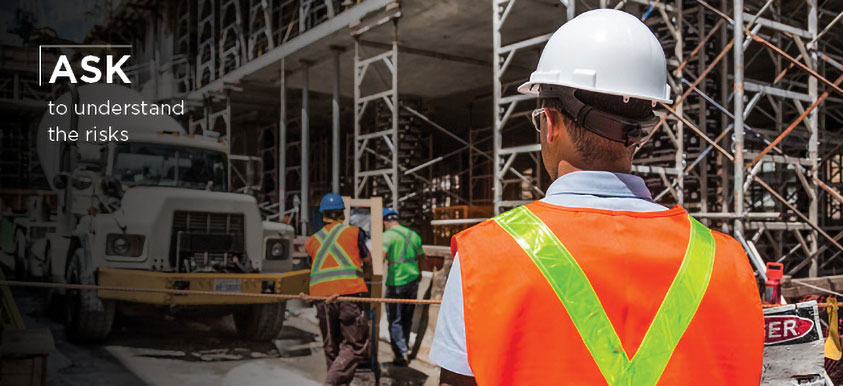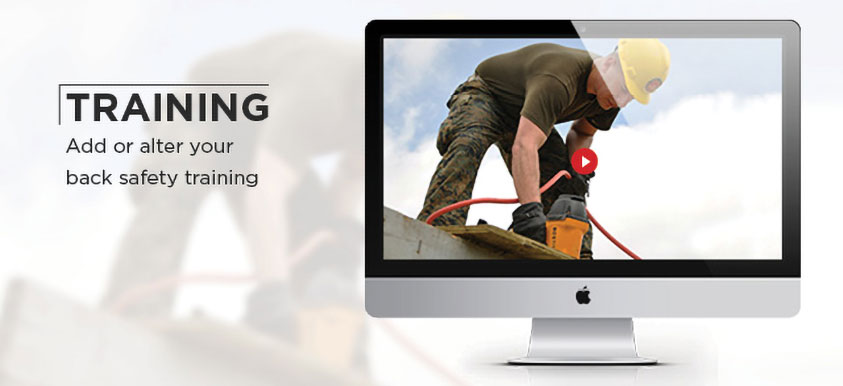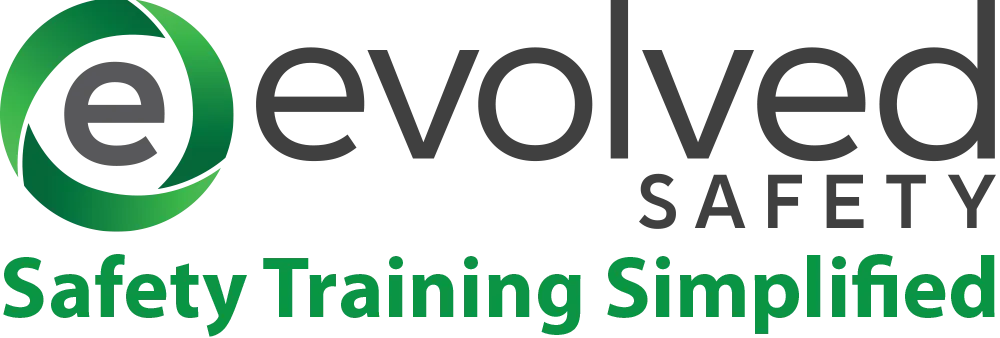
Back pain isn’t shy – depending on your age, your occupation, or your activity, back pain can strike at just about any time, arising from the most mundane movements to a one-time jarring maneuver. We know – we’ve been there. According to the National Institute of Neurological Disorders and Stroke, back pain is one of the most common health complaints in the United States and around the world, affecting 8 out of 10 people at some point in their lives.
In the safety professional world, you know that much of such complaints happen at work. Regardless of industry, back injuries can and do happen quite frequently, with risks being higher for workers at physically demanding jobs, such as manufacturing, warehouses, and hospitality. We don’t need to tell you how important it is to cover Back Safety with your employees, but in case you need a reminder, here’s a crash course on how to mitigate back injury at your workplace.
 Understanding the Risks
Understanding the Risks
Each workplace is different and should therefore have specific risks and opportunities evaluated to ensure all bases are covered for a low injury work environment. If you currently do not have standards in place, a good first step is to observe and analyze employees as they work. OSHA suggests having employees fill out a survey regarding physical difficulties on the job and their experience with low back pain, as well as measuring the weight lifting requirements, the frequency of motion, and distance travelled in each activity. Ask questions like:
- How are workers lifting loads?
- Does the floor have enough traction?
- Are workstations positioned efficiently in relation to worker tasks?
- Are handles grip-friendly?
Once these variables are addressed, you can start to develop plans to prevent injury.
 Prevention is Key
Prevention is Key
Make this your back safety mantra: Proactive prevention is always better than reactive treatment. In the prevention scenario, everybody wins, but the aftermath of an injury can cause painful surgery, medication, lost work days, a ruined safety culture, and countless dollars spent on potential workers comp, insurance claims, and more.
The good news is that prevention is easier than you think. We’ve pulled together 5 easy tips to help you and your employees maintain a healthy back while at work:
- Use Proper Lifting Technique– The most important of all the prevention back injury tips is to learn the proper lifting technique. According to OSHA, manual materials handling is the main source of compensable workforce injuries in the US, and four out of five of these injuries affect the lower back. When your job requires you to carry or lift a heavy object, proper form includes lifting with your knees and tightening your core muscles. While lifting, maintain the natural curve of your back and keep the object close to your body.
- Maintain Your Health– Food plays a huge role in how the body functions both on the inside and on the outside. Overweight persons are at greater risk for back pain, joint pain, and muscle strain than those who are not. This is especially true for people with extra weight in their stomachs, because this excess weight pulls the pelvis forward and strains the lower back. A healthy, well-balanced diet accompanied by a safe exercise program will help you achieve or maintain a healthy weight.
- Get More Rest – Low levels of rest and sleep can increase the release of stress hormones, raising the level of inflammation in the body and tension in all of your muscles, including your back muscles, making you more prone to injury and chronic diseases. If possible, try to get between 6-9 hours of sleep each day, take periodic breaks at work, and use stress-reduction techniques like deep breathing, meditation, or exercise.
- Increase Physical Fitness– The lower the level of fitness and flexibility, the higher the risk of injury. The vast majority of lower back problems are muscular in origin and if the muscles are not moved and stretched regularly, they become tight, short, and stiff, eventually resulting in back pain and injury or making existing back pain worse. Some forms of exercise to consider are aerobic or cardiovascular exercise, strength training, and stretching.
- Warm-up Before Work – If your job requires some serious movement, it’s best to properly warm-up your body before performing any strenuous work to improve performance and to reduce risk of injury. Stretch and move to loosen and warm-up muscles before you begin work.
 Workplace Training has your Back – Literally
Workplace Training has your Back – Literally
If you need something more robust, that’s where we come in. Workplace safety training can help protect employees from multiple job-related hazards, including the need-to-know back safety basics of ergonomic movements, avoiding injury, and reporting potential hazards. Plus, depending on your work environment, it’s important to make sure that all employees know how to operate job-specific machinery and equipment, and workplace training has got you covered on that, too.
Is it time to add or alter your back safety training? If the answer is a yes, no, or maybe so, we’re here to help with a no obligation phone call – we love talking safety. We’re here to help you find programs that will not only reduce back strain and risk of injury, but will also boost efficiency. Take a peek at your current safety program and shoot us a call anytime to discuss what’s on your plate.
